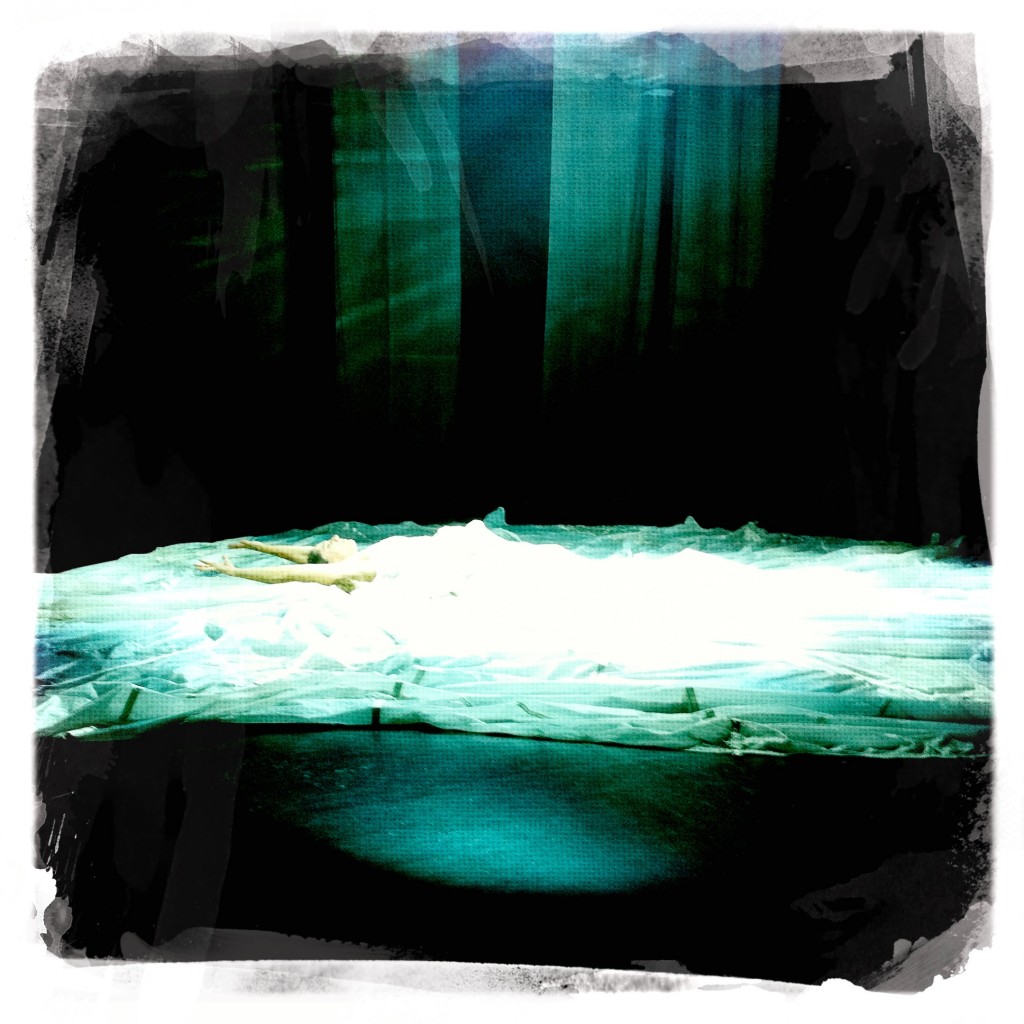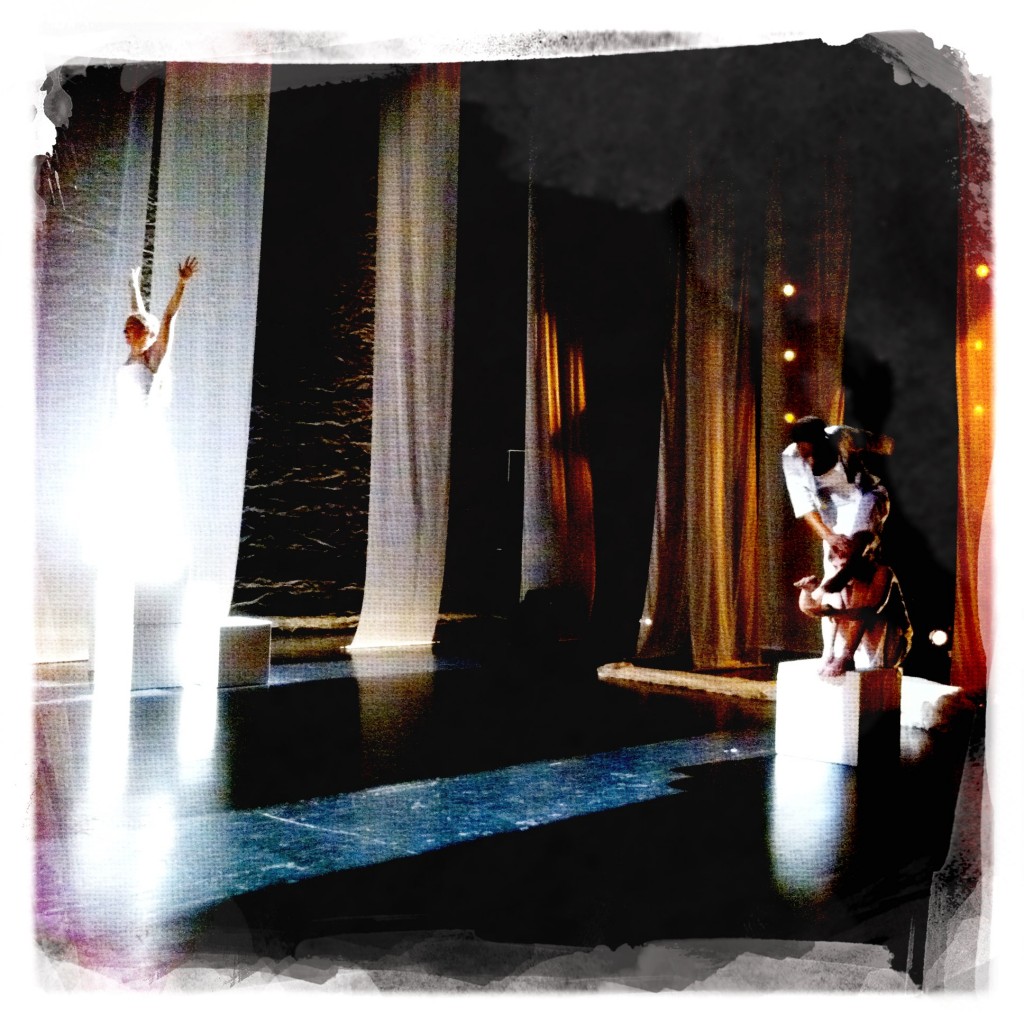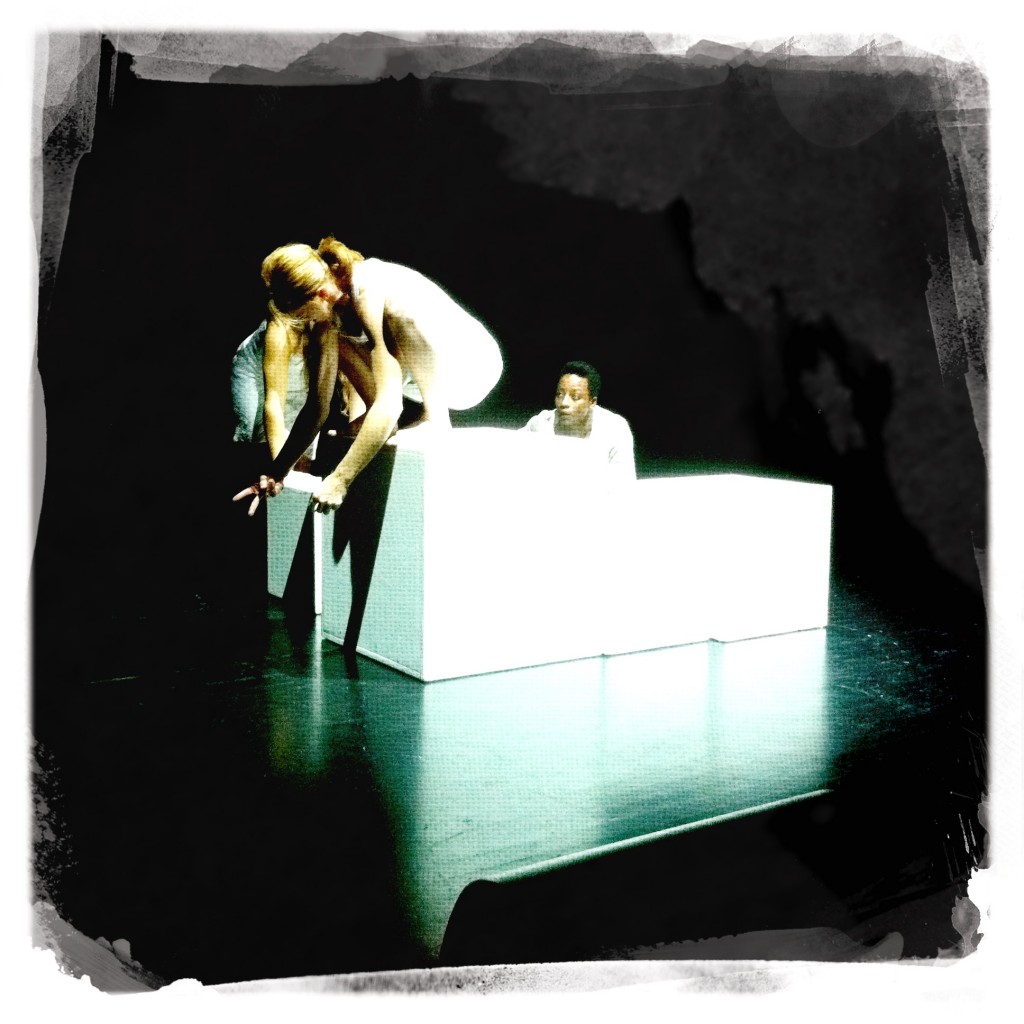
“In This Place” we remember
In this life, everything is temporary and often upside down — even our memories. They are fragile, ebullient, free-flowing fragments and figments of our imagination reconstructed from thin air and space. Our memories are an elusive and magical web of mass confusion that we carry with us everywhere we go.
“In This Place,” a new multi-disciplinary project by Heather Maloney and presented by Fundarte, a Knight Arts grantee, in collaboration with dancers Joanne Barrett and Shaneeka Harrell, catches these memories and builds them home. It explores spatial memory — the memory of each dancer’s own childhood bedroom, living room, backyard or neighborhood — to reclaim the lost memories made in those places.
The dancers were already on stage constructing their memories when we entered the On.Stage Black.Box Theater. The stage floor was covered with a giant circular cut white fabric, which reminded me of a flattened hot air balloon. The three dancers (Maloney, Barrett, Harrell) wore white islet dresses as they recited their childhood memories and used their body language to reconstruct the rooms they were describing. Toward the end of the first phase of the performance, Maloney slipped into the fabric spread across the floor and executed a solo. She slid across the stage and posed pensively as if looking for something lost in space or blotted out by the light.
As the dancers described the contents of the rooms they reconstructed, “red desk, “tall mirror,” they remembered the events that took place in that room. “This is where the dog peed,” Barrett uttered, “and my brother stepped in it.” Or, “I can still smell the barbecue.” These objects triggered the memories contained in those spaces, and I could see what they saw and smell what they smelled.
“In This Place” speaks to the diversity and independent language of each individual,” Maloney says. “They are deconstructed into actions that are rarely fluid but exemplify the Rolodex flow of memories, switching from physical extremes and painting a non-linea,r time-driven action of memory. The artists fall into out-of-memory actions: running, grasping, spinning a web and building a house for the memories to live.”
Each dancer held their own and perfectly balanced each other as they pushed, pulled and rode each other. But Barrett’s stark, distinct voice and severe facial expressions captivated the audience. She moved and spoke as if she were possessed by the past, as if each memory inside of her was its own unique being trying to come out of her body.
In her memoir the “Black Notebooks,” Toi Derricotte’s writes, “memory itself, rather than being absolute, linear, must be a continuous and liquid process, rather like the process that keeps the balance of crystals in a solution.” “In This Place” was this continuous and liquid process, where the dancers moved their bodies as if they were memory reconstruction devices. Across this surreal landscape, the audience gained access to their private memories that hide in the backyard and under the red desk. “Through our bodies we remember to remember,” Maloney says. “The body is a filter and a place where these memories live.” Maloney, Barrett and Harrell just moved their bodies and turned them upside down to empty out those memories locked deep inside.
Recent Content
-
Artsarticle ·
-
Artsarticle ·
-
Artsarticle ·




